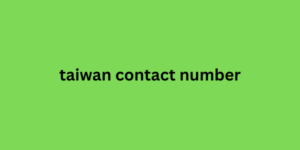These individual pieces of data may not tell you much, but taken together, they tell an incredible story about your business. What do you do with this information?
Read on to discover eight metrics you can measure to increase traffic, revenue, and customer satisfaction using restaurant data analytics in your POS.
A note on the restaurant analysis tool
Restaurant analytics is the combination of raw data, transformed taiwan contact number into easy-to-use insights that help you make better business decisions. Today, every piece of information, from wait times to tip distribution, can be collected, measured, and presented to owners in a clear manner, prompting real-time response and future plans for long-term success. Let’s dive in.
1. Improve table rotation
To serve customers well and hopefully build loyalty, you need to make the dining experience seamless at your tables. A restaurant POS system can make ordering easy and even offer tableside payment, so customers can enjoy a relaxed meal, leave satisfied, and likely to return for another meal.
Plus, because ordering and payment are faster, your staff is free to accommodate more customers, improving table turnover without unnecessarily jostling customers who want to linger a little longer.
2. Reduce food losses
Your restaurant's POS system can help you control inventory moving in and out of your kitchen, making your staff more accountable for how they cook, deliver, and account for each item ordered.
Food is your restaurant's inventory, don't let careless staff pile up a plate, fail to serve a good customer, or simply misuse intended items in a way that hurts your reputation and bottom line.
3. Adapt your workforce
Wouldn’t it be nice to know who your best and worst performing servers are? Yes, we all have that cocktail of instincts and experiences. However, you need to back up your decisions with data. Dive deeper and find out exactly how much a bad server costs your business.

If you consistently maintain the same number of cooks and servers throughout the week, but only on certain nights do you need additional servers, analyzing your restaurant can show you where waste is occurring and where you could make better use of labor.
4. Reduce discounts
You might think a few percentage points of revenue isn’t much, but that’s exactly the kind of thing that can eat into your margins. There’s no way there were 22 birthdays at the bar last night. Easily monitor staff and food with restaurant analytics to see what really happened.
5. Manage staff turnover
While losing staff is never easy, something as simple as optimizing floor layouts or changing which staff members handle certain table sizes can go a long way toward getting back to fully covered and fully efficient services. Even with a reduced staff, the right restaurant analytics can help keep productivity and morale high.
6. Monitor server performance
Use your POS's analytics on server performance to help you improve staff training, identify top-performing servers, and plan smarter.